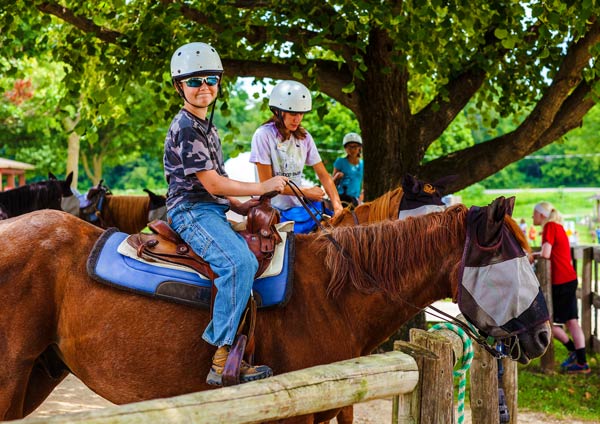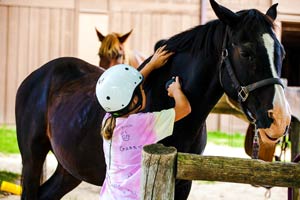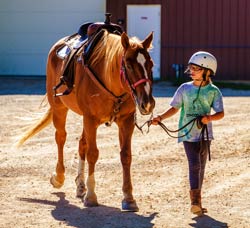 Seeing Is Believing: The Value of Field Observations
Seeing Is Believing: The Value of Field Observations
It takes just as long to break an old habit as it does to create a new one. But along the way, it’s easy to fall back into old ways. So how do you make sure your staff develops solid Core 6 habits? By observing them — and offering correction and congratulations along the way.
At Lockwood Park, a working farm that’s part of the Rockford Park District, it’s always important to follow Core 6 strategies when handling animals and operating unusual machinery. “Field observations are a constant practice for us,” says Debbie Ackerman, Manager, Lockwood Park’s Trailside Equestrian Centre and Children's Farm.
“Lockwood is unique because our animals are constantly moving and can be unpredictable,” she explains. “We have unique equipment as well, because we’re a working farm. Whether it’s driving a tractor, throwing hay from a loft or handling horses, Lockwood Park employees and managers must constantly be aware of safety and observe how each other performs different tasks.”
 The responsibility for animal and human safety amid so many moving parts — literally — requires additional focus on making field observations. “Managers and coordinators observe staff performing daily duties and handling machinery and animals. When corrections are needed, they make them in a way that helps employees understand why they must perform their jobs safely and how it benefits them as well as others.” The responsibility for animal and human safety amid so many moving parts — literally — requires additional focus on making field observations. “Managers and coordinators observe staff performing daily duties and handling machinery and animals. When corrections are needed, they make them in a way that helps employees understand why they must perform their jobs safely and how it benefits them as well as others.”
Ackerman incorporates Core 6 into the park’s training program for new staff, includes time for employees to practice the strategies and then ensures they continue to follow Core 6 through observations, on-the-spot feedback and regular communication between employees and supervisors. “Core 6 has led to less wear and tear on our equipment and fewer accident reports,” Ackerman concludes. “It benefits everyone at Lockwood Park — human and animal.”
 Because the Northwest Special Recreation Association (NWSRA) works with patrons with special needs, Trisha Breitlow, CTRS, CPRP, and Superintendent of Administrative Services, knows proper training is especially important. That’s why NWSRA uses standardized forms — like the Specific Training Agenda, Program Observation and Two-minute Training forms. Because the Northwest Special Recreation Association (NWSRA) works with patrons with special needs, Trisha Breitlow, CTRS, CPRP, and Superintendent of Administrative Services, knows proper training is especially important. That’s why NWSRA uses standardized forms — like the Specific Training Agenda, Program Observation and Two-minute Training forms.
“SRAs have more staff per participant than park districts do,” Breitlow explains, “because our participants have additional needs. Program leaders wear many hats, and these forms help focus their attention on the continual training staff needs.”
The forms address all Core 6 principles and also provide a metric for evaluating programs. “We tie Core 6 to all staff and participant activities,” she adds. “NWSRA staff use the Program Observation Form to conduct observations, and immediate supervisors use it to see their staff in action. If a participant is having difficulty in a program, the form provides a feedback channel about the program structure, so we can improve it to affect participants’ behavior. When the observation form shows things being done well, it creates a pro-active environment for behavior management, overall safety and structured programming.”
The Two-minute Training Form is an opportunity for on-the-spot training. “Sometimes it’s used once the program is set up and there are a few minutes before participants arrive,” Breitlow explains. “The variety of topics included in this form offer enough options for the program leader to review something every time a program meets.
“The forms and observations work together to provide continual training and feedback to program staff. It’s about making sure everyone follows Core 6 strategies — and recognizing when staff is doing things right.”
PDRMA Resources:
|

